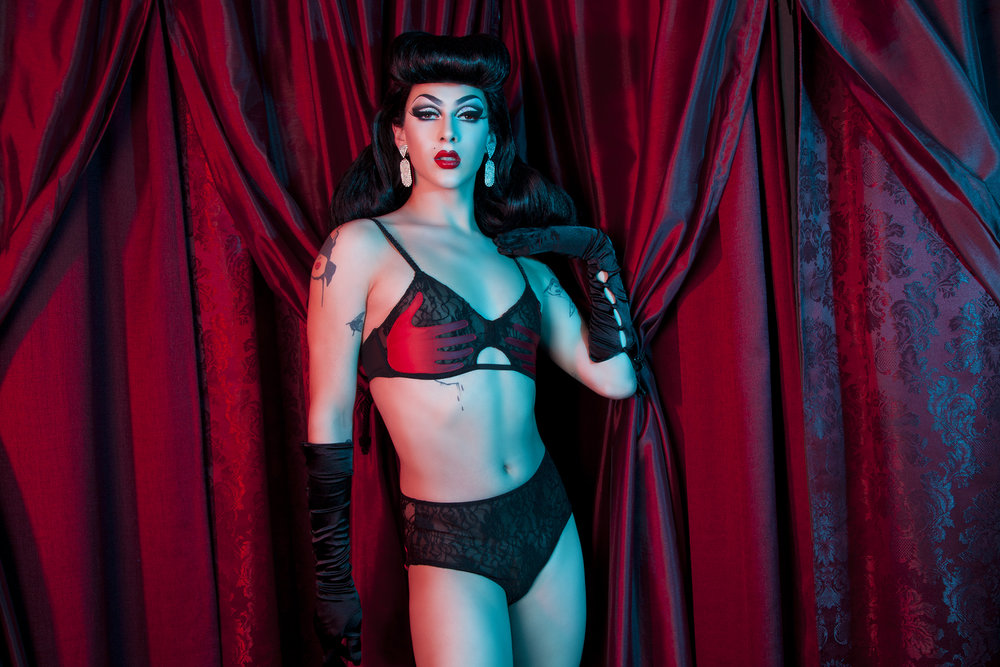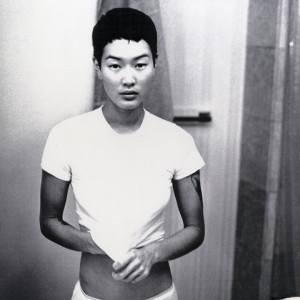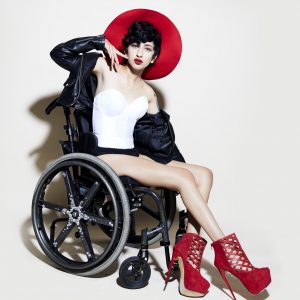So You Want to Reach a Queer Audience: Do's and Don'ts for Lingerie Companies
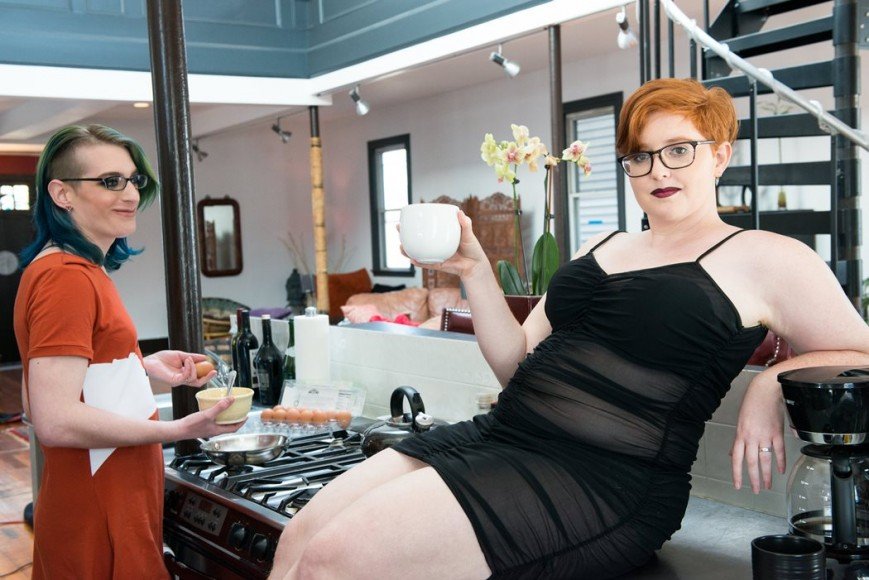
A photoshoot for the now-closed queer-owned lingerie store Bluestockings Boutique
With increased attention in news and social media to corporate practices and the power of “voting with your dollar” to support companies that share your ethics, many companies find themselves needing to articulate and represent their values in more visible and vocal ways. Similarly, more visible attention to the rights of LGBTQIA+ folks has also brought attention to the buying power of the “pink dollar.”
As a queer and genderqueer person – and consumer – with a recent increase in my budget for fun spending, I’m finding myself more and more interested in supporting companies who visibly show that they want me as a customer.
It only takes a poke around on the websites and social media of lingerie companies to see those that consider their customer narrowly – and don’t actively include queer and trans folks among them. Especially within the highly-gendered lingerie industry, company owners who do not identify under the LGBTQIA+ umbrella might find it difficult to see some of the small – and large – changes that would make their company more welcoming and affirming.
I’m here to give you a few dos and don’ts for attracting queer and trans customers. Like straight and cis folks, our styles range the whole gamut available, so no need to think that your products wouldn’t be of interest to us! I promise there’s a queer out there who wants what you’re selling.
This guide, however, is not intended to help you pander to us as an audience without confronting some of your own assumptions, or those of your audience. Standing up for inclusion requires change in language, representation, imagery, and hiring practices, not simply slapping a rainbow on your website in June.
Do: Hire Broadly and Inclusively
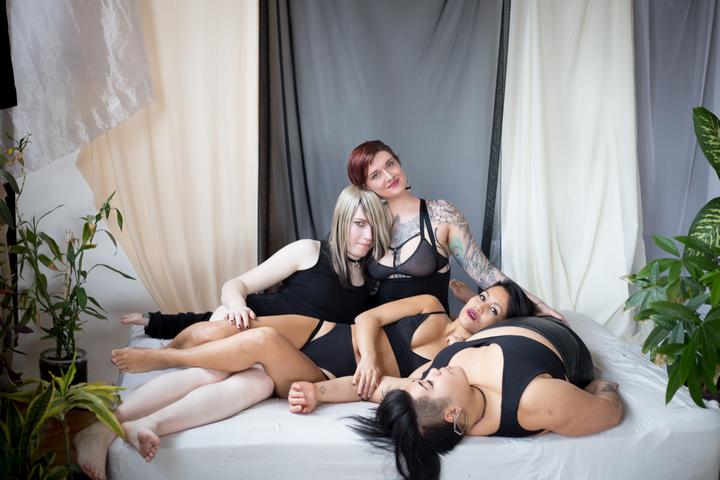
The team at Origami Customs
True support is not simply about making items available for us to buy, but providing opportunities and recognizing the ways in which your current company structure might uphold cisheterosexual, white, thin, abled norms. Who do you hire? Who has say in big decisions? Who are the visible faces of your organization? Who makes, packs, and ships the items you sell?
If, at this moment, you’re taking stock of your company structure and relationships and realizing they’re too homogenous, take action now to rectify that. That might include new hiring practices, affirmative action in promotions, and consulting with queer, trans, BIPOC, and disabled experts on ways to improve.
Often the most visible parts of a lingerie company are the models used. I don’t think it’s revolutionary to say that representing a diverse range of bodies, identities, and abilities in your model selection is best practice! While it’s true that there’s no one way to look queer or trans, there are plenty of us who take pride in signaling our identities through our style, hair, tattoos, or gender affirming procedures. Using models who are proudly and visibly queer and trans tells us that you understand and value that the legibility of our identities matters to us.
Don’t: Backpedal When You Fuck Up
We often don’t know what we don’t know. If you’re in the process of trying to rethink your business practices and fuck up – in your wording, in representation, in the treatment of employees or models – you will get called out. Like most social-media-engaged consumers, many folks in the queer community believe strongly in holding companies responsible for their mistakes.
Often, your response matters as much if not more as the initial fuck-up. Recognizing and rectifying the error through a sincere and action-oriented apology is necessary. Direct your efforts both publicly, on your social media channels, and privately toward any harmed individual. Make concrete, itemized plans to do better.
I don’t speak for everyone in the queer community, but from my perspective, if you’ve been working to show your support in visible and concrete ways before a fuck-up and offer a sincere and action-oriented apology, I’m willing to give you another chance.
Don’t: Promise More Than You Can Produce
Many companies find it tempting to reach for buzzwords to show just how great they are: ethical, inclusive, revolutionary, androgynous, gender-binary-busting! But these words really don’t mean a lot. Even worse, many of them are easily disproved, such as the “size inclusive” line that goes up to a US women’s 14 or the “androgynous” company that still separates their items into “men’s” and “women’s.”
Instead of falling back on buzzwords, actually tell us more about your manufacturing processes and certifications to show your ethics. Show us through your user interface and product names that you cater to all genders. Offer a wide range of sizes and show your items on multiple types of bodies.
Do: Rethink What You Know About Gender
To any more-than-casual lingerie consumer, claims of being revolutionary are almost always disappointing. When it comes to putting a queer flair on your designs, it can be tempting to claim that your products bust open the gender binary. However, all too often that simply means “menswear”-styled items on assigned female at birth (AFAB) models.
Similarly, items are still often separated into “men’s” and “women’s” categories, with separate size charts and numbering systems. If you really feel your products could work for any gender and wish to advertise them thus, it’s time to rethink the ways you categorize, name, and describe the fit of your garments.
For instance, underwear could be described as coming in an option “with pouch” versus a “flat front” option. A single size chart for stretchy or less fitted items is usually adequate. Separate size charts for different body types could describe those types rather than ascribe them gender.
Do: Give Us Information to Make Informed Choices
Having an easy to find and comprehensive size chart(s) is, again, always good practice, but is especially useful for gender-nonconforming and trans customers who might not know or fit into traditional size numbering systems. Make sure that your size chart is linked on your main page and every product page. It should offer the most pertinent body measurements for each size, such as a hip and waist measurement for underwear, chest and underbust for bras, etc.
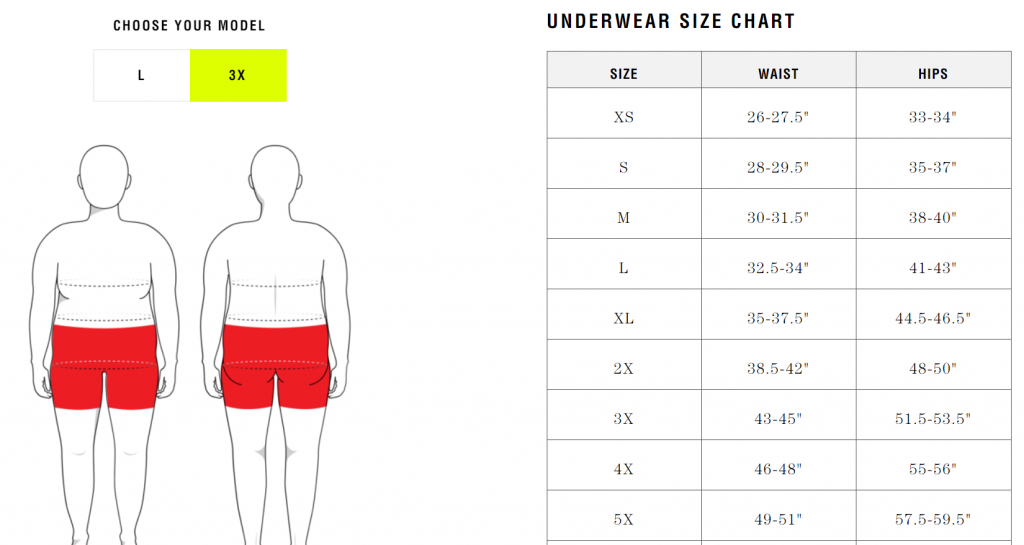
Size chart for Tomboyx underwear
For instance, the size chart shown above from Tomboyx offers customers a wealth of practical details:
- A line drawing that is not overly gendered and comes in two sizes to show the expected fit of different items
- Multiple size charts, one for each type of garment (underwear, bras, bottoms, tops), that show the appropriate body measurements in inches for each size
- A measurement guide at the bottom describing how and where on the body to take measurements
- Gender neutral language to describe body parts
Do: Give Us Queer AF Photoshoots
There’s a long and troubling history of lingerie companies using female homoerotic imagery to appeal to the male gaze. Don’t do that.
Instead, hire queer models, stylists, photographers. Rethink what “sexy” or “flattering” poses look like. Depict a variety of moods through your models’ posing and styling. Let them be powerful, whimsical, aggressive, playful, intimate, friendly, collective, individual, and sexual.
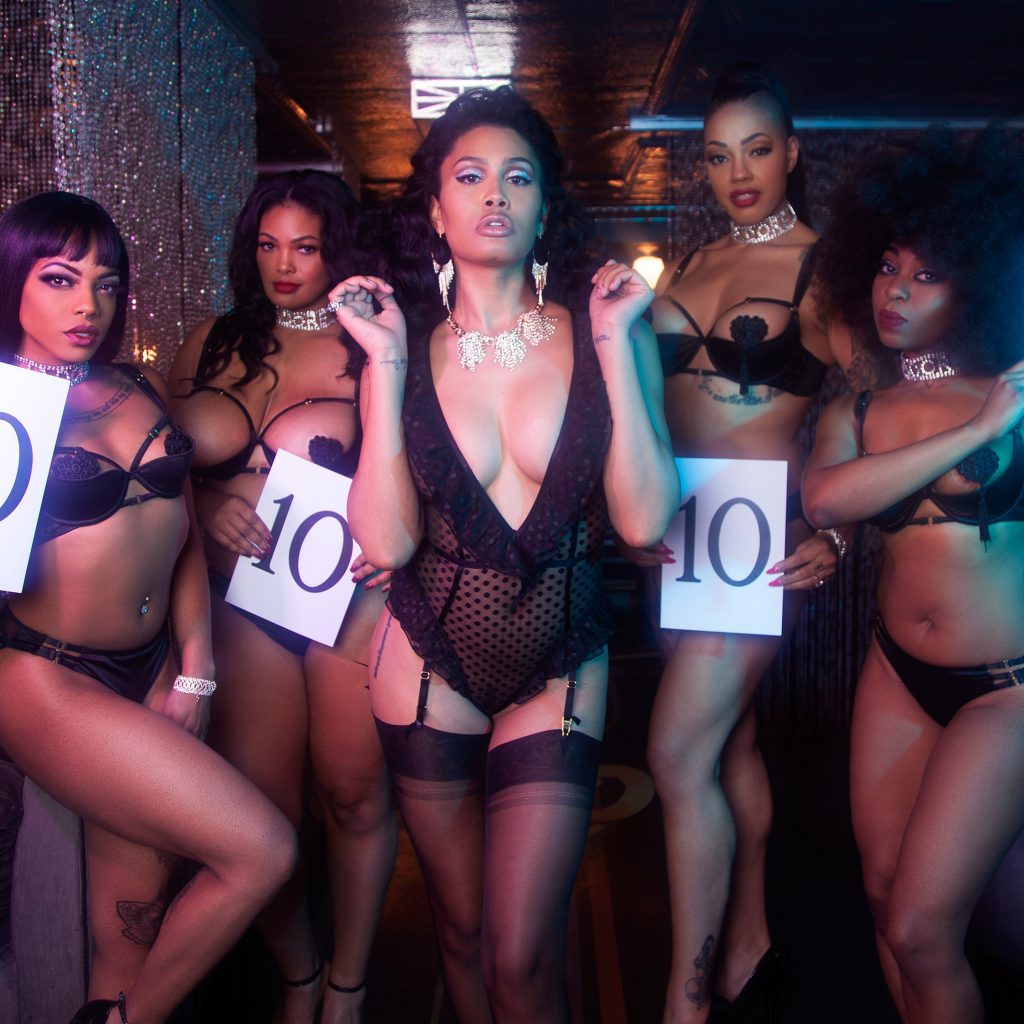
Leyna Bloom X Playful Promises collaboration
UK brand Playful Promises excels in this. Their chosen models represent a range of gender identities, sizes, races, and ages. The styles of their photoshoots range from slick and polished to playful and sweet to powerful and fierce. These elements always come together into their distinctive and recognizable look. I like supporting them because I know they care about expanding their size ranges and representation in meaningful ways.
Don’t: Ignore Your Comment Section
As those of us with non-normative bodies know, commenters on the internet can be vicious when encountering something that threatens their narrow view of acceptability. I believe you should always monitor your comment section, because otherwise you run the risk of racking up comments that range from fetishists to neo-Nazis.
However, if you’re putting out images of models or customers who are queer, trans, BIPOC, fat, disabled, it’s even more your responsibility to stand by that decision and defend their humanity. Have a consistent comment policy. Will you delete and block offensive commenters or correct and engage with them? Does everyone on your social media team know the identity descriptors and pronouns of your models? Are they all confident in not only using them but correcting others on them?
If you’re so afraid of losing a conservative customer base that you’re not willing to defend your queer and trans customers and models from attacks and ignorance, then you’re simply using us, not actually supporting us.
Do: Always Strive to Do Better
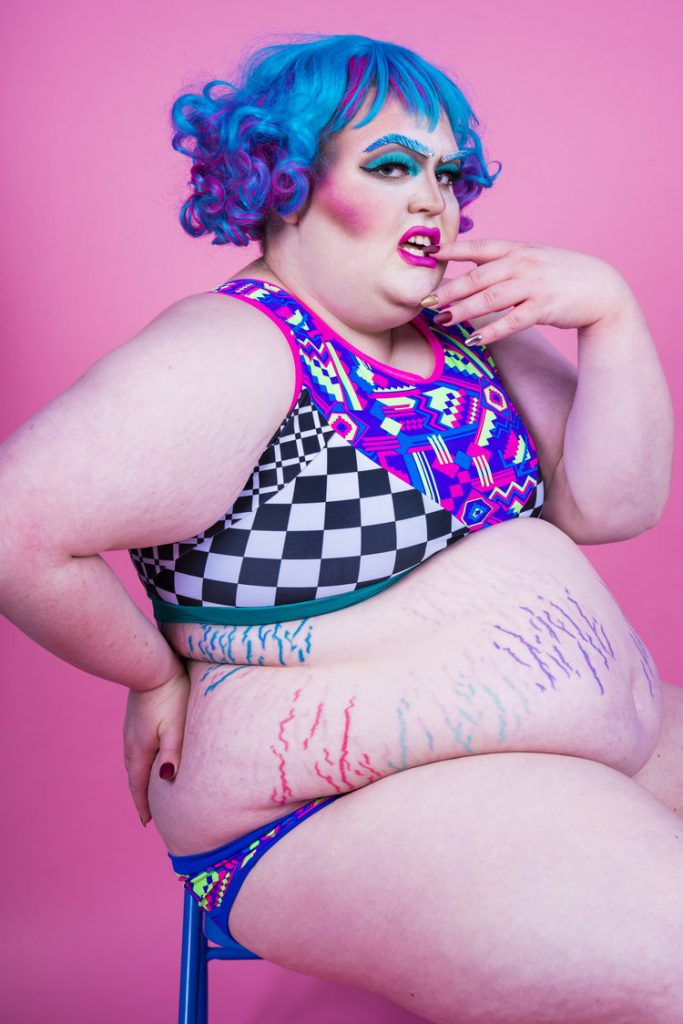
C'est Kevvie in Rebirth Garments
Customers notice when companies don't follow the narrowest, "safe" path. We notice when you celebrate us, in all our multitudes. We notice when you're bold and stand firm in your values.
You might not be able to make the widest range of sizes possible right now, or hire a whole range of models, or reach every possible customer you’d like. However, there are many changes you can make right now that will make your company better without spending money.
More importantly, though, those who head and represent companies need to recognize places for improvement and recognize that we, collectively, continue to learn and develop better language for our needs. The language and desires of the queer community are going to change. The ways we described ourselves just ten or twenty years ago no longer always apply, and norms around things like pronoun usage are becoming more widespread.
Staying up-to-date with best practices requires recognizing that those change. That flexibility is necessary, and if you’re not a part of the LGBTQIA+ community, you don’t get to decide what is right or normal. Following the lead of queer voices in the lingerie community – like Cora’s and many of the other voices represented here at TLA! – and paying serious attention to your feedback will help you stay adaptable and change with the needs of your consumers.
As a queer person, I’m not going to buy from every company. Some don’t stock my size. Some have bad business practices I don’t agree with. Some simply aren’t my style. But as I said above, there’s as many ways of being queer as there are queer folks, so I promise you, some of them are in your audience. Embrace that!





